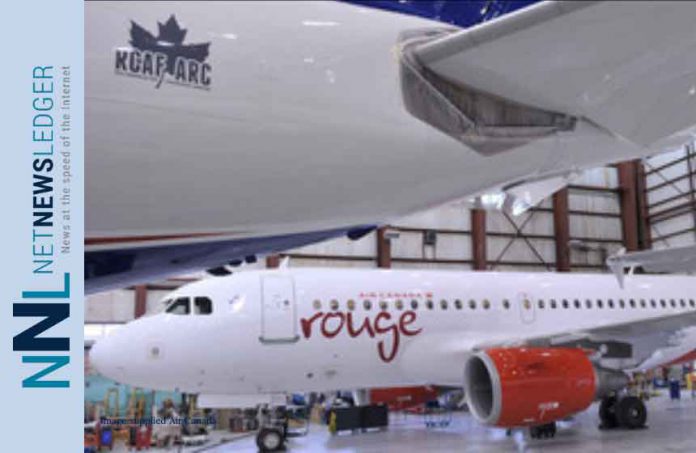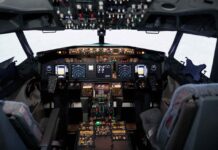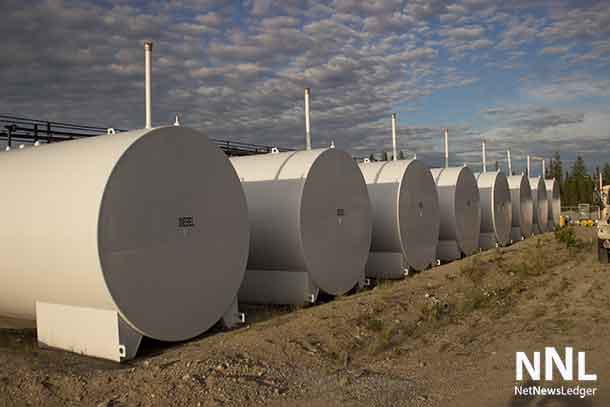Operating Loss of $1.133 billion
MONTREAL – Business – Air Canada has reported financial results for the second quarter 2021.
- Operating revenues of $837 million, an increase of $310 million or 59 per cent from the second quarter of 2020.
- Negative EBITDA (1) (earnings before interest, taxes, depreciation, and amortization), excluding special items, of $656 million compared to negative EBITDA (excluding special items) of $832 million in the same quarter of 2020.
- Operating loss of $1.133 billion compared to an operating loss of $1.555 billion in the second quarter of 2020.
- Net cash burn (1) of $745 million, or about $8 million per day, on average.
- Unrestricted liquidity of nearly $9.8 billion at June 30, 2021.
“The COVID-19 pandemic continued to weigh on Air Canada and the Canadian airline industry in the second quarter, with its impact on travel reflected in our results. Our employees, as they always have, focused on taking care of our customers while carrying them safely to their destinations, and continued to ensure the prudent management of our company. I thank them for their ongoing care, creativity and hard work in this very challenging and complex environment,” said Michael Rousseau, President and Chief Executive Officer of Air Canada.
“We are pleased to see vaccination rates increasing and more recent science-based easing of travel restrictions in Canada. The elimination of the quarantine period for fully vaccinated returning Canadians and the removal of other travel restrictions announced in June led to a significant increase in bookings. We expect this trend to further increase following the July 19th announcement communicating positive changes to come for Canadian travel restrictions. Our employees and other stakeholders should be encouraged by the positive industry trends and the strong improvement in the outlook we see for our airline. However, as we have historically done, we will continue to manage both our cost structure and the balance sheet very conservatively.
“Our cash burn in the second quarter of about $8 million on average per day was better than earlier projections of $13–$15 million. We attribute this to increased bookings and our continuing effective cost controls. We ended the quarter with close to $9.8 billion in unrestricted liquidity. We have seen in countries where reopening is further along than in Canada that the easing of travel restrictions not only facilitates travel but also drives additional demand for air travel and provides a potent stimulus to overall economic activity. Our current booking trend seems to be evidence of this, and recent science-based easing of travel restrictions not only allows customers to travel but further adds to their confidence to make travel plans. Taking all these factors into account, we can optimistically say that we are turning a corner and expect to soon see correlated financial improvements as evidenced by our cash burn guidance of $3–$5 million per day for the third quarter.
“We are excited and ready to welcome back our valued customers in greater numbers and to introduce them to the many improvements we have made to enhance their journey. I remain fully confident that Air Canada will rebuild stronger and rise higher than ever before,” concluded Mr. Rousseau.
Second Quarter Updates
Capacity and Route Network
In the second quarter of 2021, Air Canada increased its ASM capacity by 78 per cent compared to the second quarter of 2020 (a reduction of 86 per cent when compared to the second quarter of 2019).
On June 14, 2021, Air Canada and Air Canada Cargo announced an initial list of planned routes for the Boeing 767-300ER freighters scheduled to enter service later in 2021. Since March 2020, Air Canada has operated more than 10,000 all-cargo flights using its wide-body passenger aircraft including certain temporarily modified Boeing 777 and Airbus A330 aircraft, which have additional available cargo space due to the removal of seats from the passenger cabin.
On June 15, 2021, Air Canada announced its peak summer schedule serving a total of 50 Canadian destinations from coast to coast. The schedule was developed to advance Canada’s economic recovery and to support the country’s tourism and hospitality businesses during the important summer period. It includes three new routes, the re-establishment of select regional routes, and wide-body aircraft featuring Air Canada Signature Class and Premium Economy Class on select transcontinental routes. In the second quarter of 2021, Air Canada also announced its international schedule for Summer 2021 and an expanded service to Hawaii for the Winter 2022 schedule, and, on June 18, 2021, operated its inaugural Montreal–Cairo flight.
On July 19, 2021, Air Canada announced its summer transborder schedule, including 55 routes and 34 destinations in the U.S., with up to 220 daily flights between the U.S. and Canada. The new schedule coincides with the easing of Canadian travel restrictions between the two countries as of August 9, 2021, including the removal of hotel quarantine requirements for all travellers, relaxed testing requirements for Canadians travelling to the US for less than 72 hours, and allowing fully vaccinated citizens and permanent residents of the U.S. to enter Canada for non-essential travel, and other measures.
Financing and Liquidity
In the second quarter of 2021, Air Canada concluded the following financing transactions:
- On April 12, 2021, Air Canada entered into a series of debt and equity financing agreements with the Government of Canada (acting through Canada Enterprise Emergency Funding Corporation) which allows Air Canada to access up to $5.879 billion in liquidity through the Large Employer Emergency Financing Facility (LEEFF) program. The financial package provides for fully repayable loans that Air Canada would draw down if and as required. The package also included an equity investment for gross proceeds of $500 million for Air Canada shares at a price of $23.1793 per share, as well as an aggregate of 14,576,564 warrants exercisable for the purchase of an equal number of Air Canada shares, subject to customary adjustments, at a price of $27.2698 per share during a 10-year term; 50 per cent of the warrants vested concurrently with the implementation of the credit facilities and the remaining 50 per cent of the warrants will vest on a proportional basis to the amounts, if any, that Air Canada may draw under the unsecured credit facilities (excluding the refunds credit facility). Additional details on these agreements are provided in the “Overview” section of Air Canada’s Second Quarter 2021 MD&A.
- On April 15, 2021, Air Canada repaid US $400 million of the 7.750% Senior (Unsecured) Notes, upon maturity.
- On July 19, 2021, Air Canada announced that it had launched the syndication of a new senior secured term loan B expected to mature in 2028 (the “Term Loan”), and completed the syndication in respect of a new senior secured revolving facility expected to mature in 2025 (the “Revolving Facility”, together with the Term Loan, the “Senior Secured Credit Facilities”). Subject to market and other conditions, Air Canada intends to complete refinancing transactions seeking total gross proceeds of approximately US$5.35 billion, and which will include the entering into of the Senior Secured Credit Facilities. The proceeds of the Term Loan are intended to fund (i) the refinancing of the Company’s 4.75% senior secured notes due 2023 and 9.00% second lien notes due 2024, (ii) the refinancing of the Company’s indebtedness under the loan agreement dated as of October 6, 2016 and comprised of a syndicated secured US dollar term loan B facility and a syndicated secured US dollar revolving credit facility and (iii) working capital and other general corporate purposes of Air Canada and its subsidiaries. The proceeds of the Revolving Facility are intended to fund working capital and other general corporate purposes of Air Canada and its subsidiaries. Air Canada will review multiple funding sources when assessing these refinancing transactions. Closing of the Senior Secured Credit Facilities is expected to occur in the latter half of August 2021, subject to obtaining lender commitments, market conditions and customary closing conditions.
Second Quarter Financial Summary
Air Canada recorded a net loss of $1.165 billion or $3.31 per diluted share in the second quarter of 2021 compared to a net loss of $1.752 billion or $6.44 per diluted share in the second quarter of 2020.
In the second quarter of 2021, on a year-over-year capacity increase of 78 per cent, operating expenses of $1.970 billiondecreased $112 million or five per cent from the same quarter in 2020.
In the second quarter of 2021, net cash flows used in operating activities of $1.377 billion deteriorated by $126 millionfrom the same quarter in 2020 due to a decrease in cash from working capital, mainly attributable to ticket refunds of $997 million, which was partially offset by an improvement in advance ticket sales. Additionally, an increase in end of lease return costs as compared to the same quarter in 2020 were a contributing factor to the decrease of cash flows used in operating activities.
In the second quarter of 2021, net cash burn of $745 million, or about $8 million per day, on average, was better than management’s expectation of $13–$15 million per day, discussed in Air Canada’s May 7, 2021 news release. EBITDA in the second quarter was better than expected mainly due to continued very strong cost control and rapid adjustments of capacity to market demand. The EBITDA variance accounted for $2 million per day of the favourable variance in net cash burn. Working capital contributed $2 million per day to the favourable variance and was mainly due to stronger advance ticket sales than forecast and to the ongoing strong management of trade receivables and other working capital items. Capital expenditures were also lower than forecast in the quarter, in part, due to the strengthening Canadian dollar.
Outlook
Air Canada plans to increase its third quarter 2021 ASM capacity from the same quarter in 2020 by about 85 per cent. In the third quarter of 2021, when compared to the same period in 2019, ASM capacity is expected to decrease about 65 per cent. The airline continues to dynamically adjust capacity and take other measures as required to account for public health guidelines, travel restrictions globally and passenger demand.
Air Canada projects a net cash burn of $280–$460 million (or $3–$5 million per day, on average) in the third quarter of 2021. This net cash burn projection includes $2 million per day in capital expenditures, net of financing, and $4 million per day in lease and debt service costs. The net cash burn projection for the third quarter of 2021 excludes the remaining amount of expected eligible refunds of non-refundable fares being processed pursuant to the change in refund policy announced on April 12, 2021 for flights impacted by the COVID-19 pandemic, as these refunds are eligible for draws under the Government of Canada $1.404 billion refund credit facility. As such, these refunds are generally cash neutral to Air Canada’s liquidity position, up to the $1.404 billion limit of the facility.
In April 2021, Air Canada started offering eligible customers who purchased non-refundable tickets for travel on or after February 1, 2020 but did not fly, the option to obtain a refund to the original form of payment. On June 10, 2021, the deadline to seek refunds under this COVID-19 Refund Policy was extended to July 12, 2021. Air Canada has paid $997 million as at the end of the second quarter and expects to pay about an additional $200 million in the third quarter, which will be eligible for draws under the Government of Canada $1.404 billion refund credit facility.
Additional details on the COVID-19 Refund Policy are provided in the “Overview” section of Air Canada’s Second Quarter 2021 MD&A and on Air Canada’s website at www.aircanada.com.
(1) Non-GAAP Measures
Below is a description of certain non-GAAP financial measures used by Air Canada to provide readers with additional information on its financial and operating performance. Such measures are not recognized measures for financial statement presentation under GAAP, do not have standardized meanings, may not be comparable to similar measures presented by other entities and should not be considered a substitute for, or superior to, GAAP results. Readers are advised to review the section entitled “Non-GAAP Financial Measures” in Air Canada’s Second Quarter 2021 MD&A for a further discussion of such non-GAAP measures and a reconciliation of such measures to Canadian GAAP.
EBITDA (earnings before interest, taxes, depreciation, and amortization) is commonly used in the airline industry and is used by Air Canada as a means to view operating results before interest, taxes, depreciation, and amortization. These costs can vary significantly among airlines due to differences in the way airlines finance their aircraft and other assets. Air Canada excludes special items from EBITDA as these items may distort the analysis of certain business trends and render comparative analysis to other airlines less meaningful. Refer to the “Non-GAAP Financial Measures” section in Air Canada’s Second Quarter 2021 MD&A for a discussion of special items relating to the second quarter of 2021.
Net cash burn is commonly used in the airline industry and is used by Air Canada as a measure of cash used to maintain operations, support capital expenditures, and settle normal debt repayments, all before the net impact of new financing proceeds. Net cash burn is defined as net cash flows from operating, financing for aircraft deliveries, and investing activities. Excluded are proceeds from non-aircraft financings, lump sum debt maturities made where Air Canada has refinanced or replaced the amount, and proceeds from sale and leaseback transactions. Net cash burn also excludes movements between cash and short and long-term investments, and refunds for non-refundable fares being processed for flights impacted by the COVID-19 pandemic. Such refunds are eligible for draws under the Government of Canada$1.404 billion refunds credit facility and, therefore, are generally cash neutral to Air Canada’s liquidity position (up to the $1.404 billion limit of the facility) and improve net working capital.
Air Canada’s Second Quarter 2021 Consolidated Financial Statements and Notes and its Second Quarter 2021 Management’s Discussion and Analysis of Results of Operations and Financial Condition are available on Air Canada’s website at aircanada.com and will be filed on SEDAR at www.sedar.com.
For further information on Air Canada’s public disclosure file, including Air Canada’s Annual Information Form dated March 11, 2021, consult SEDAR at www.sedar.com.
Second Quarter Analyst Conference Call
Air Canada will host its quarterly analysts’ call today, Friday, July 23, 2021 at 08:00 a.m. EDT. Michael Rousseau, President and Chief Executive Officer, Amos Kazzaz, Executive Vice President and Chief Financial Officer, Lucie Guillemette, Executive Vice President and Chief Commercial Officer, and Craig Landry, our Executive Vice President of Operations will be available for analysts’ questions. Immediately following the analysts’ Q&A session, Mr. Kazzaz and Pierre Houle, Vice President and Treasurer, will be available to answer questions from term loan B lenders and holders of Air Canada bonds.
The public may access this call on a listen-in basis. Details are as follows:
|
Live audio webcast: |
|
|
By telephone: |
416-406-0743 or 1-800-898-3989 (toll free), passcode: 5257178#. |
|
Please allow 10 minutes to be connected to the conference call. |








